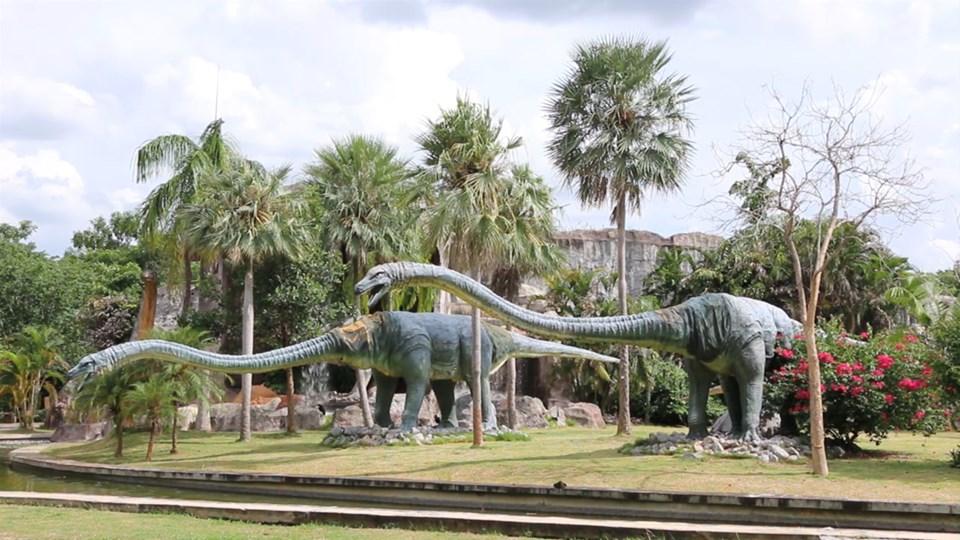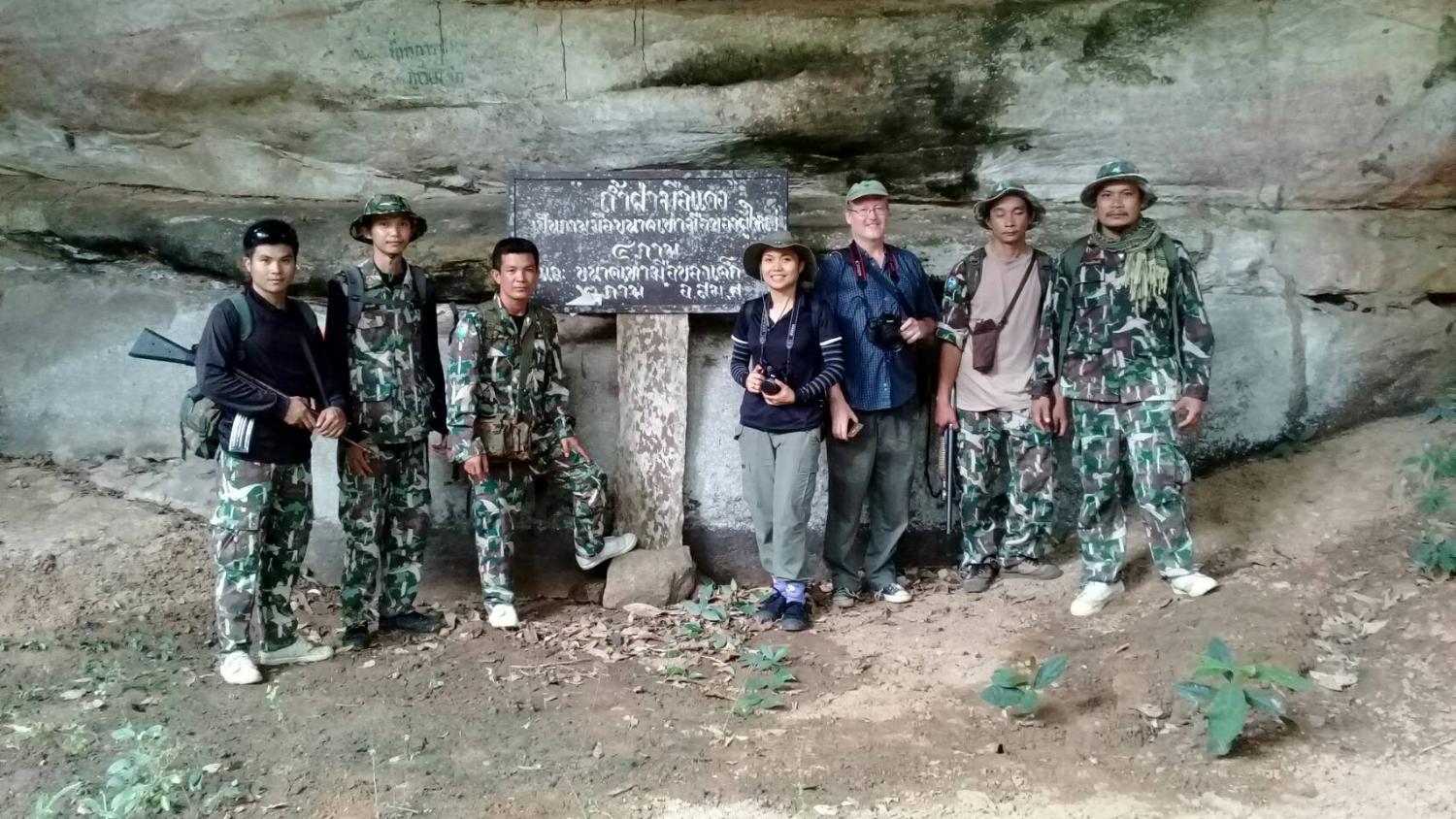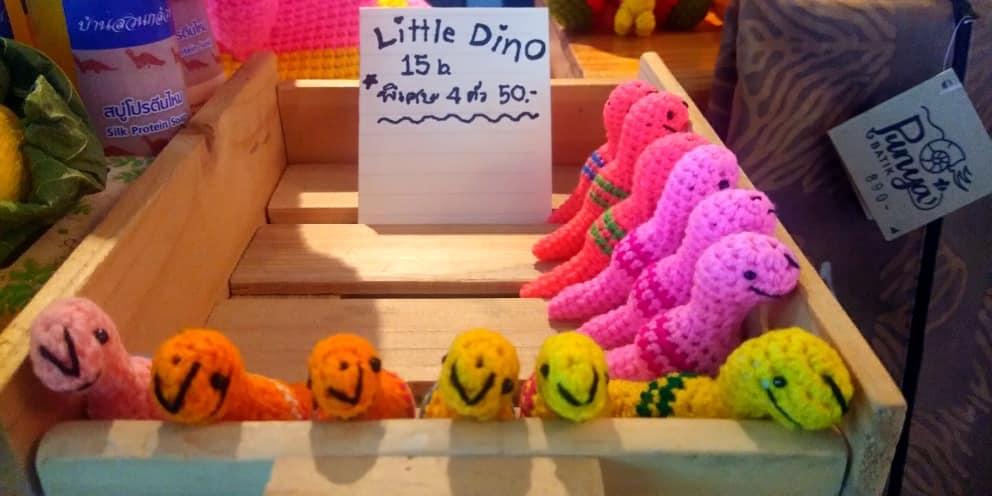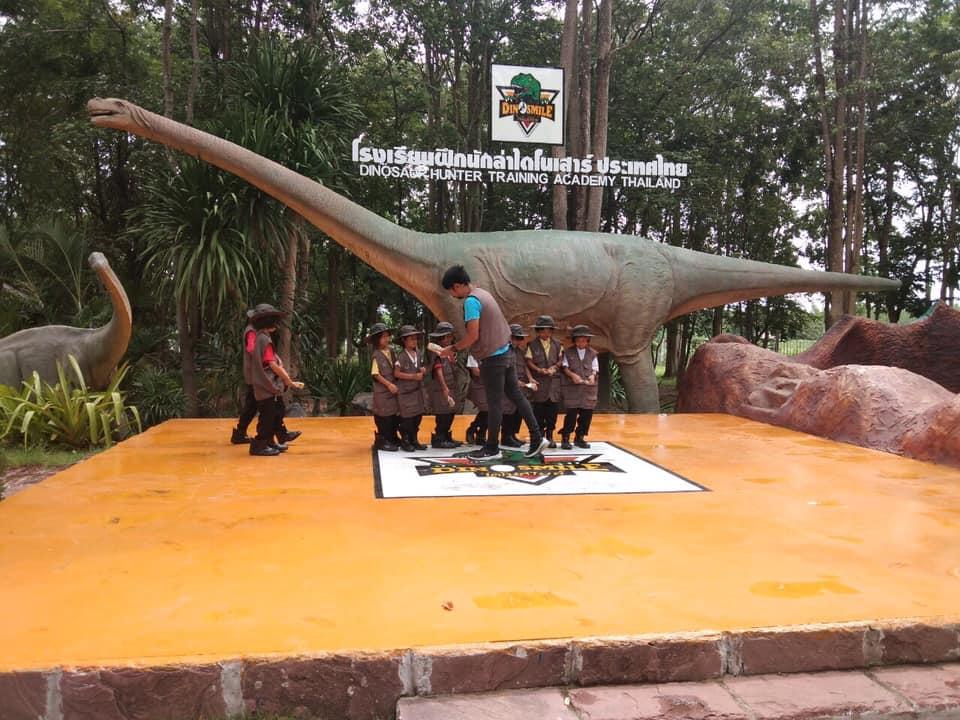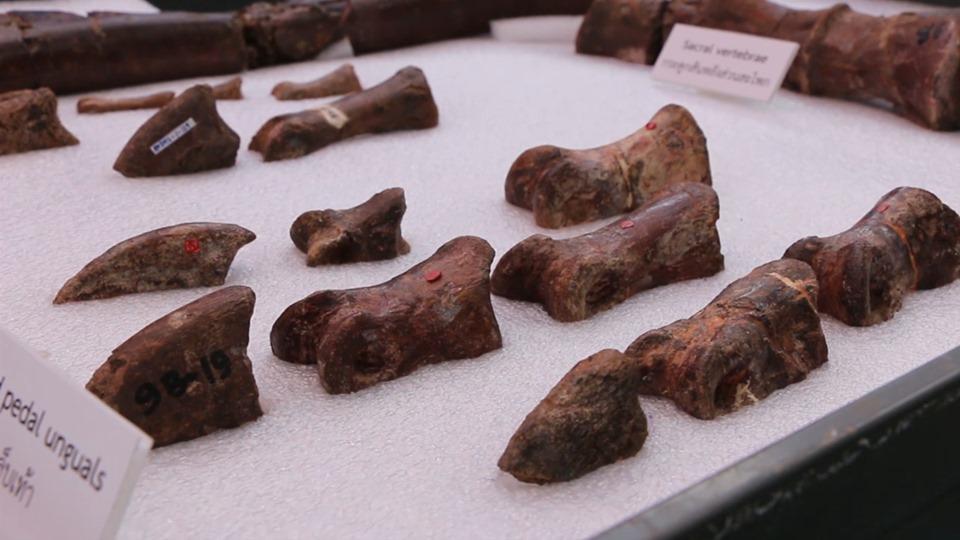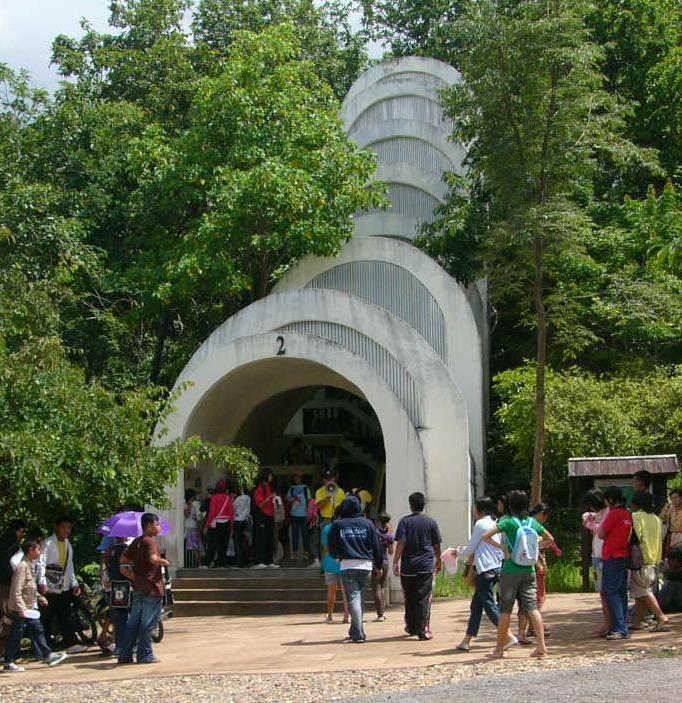
The discovery of a fossil of a meat-eating dinosaur in Khon Kaen earlier this year is giving Thailand's northeastern region more visibility on the world's prehistoric circuit.
Excitement coursed through Thailand's archaeological circles back in July, when the fossilised remains of a new species of carnivorous dinosaur, Phuwiang venator yaenniyomi, were unearthed in Khon Kaen. The dinosaur was named after the Phu Wiang National Park, where its fossils were located.
The discovery was only the tenth new species of dinosaur fossil native to Thailand that has been unearthed -- and the fifth to be dug out in Khon Kaen.
In terms of its physical make-up, Phuwiang venator yaenniyomi stands out from other dinosaurs whose fossilised remains have been found in Thailand to date. The fossil, which is made up of the dinosaur's lower vertebrae, a hip bone, and a set of feet and claws, measures about six metres long.
Experts say that Phu Wiang National Park was home to at least four different dinosaur species. The first fossil discovery in the park was in 1976 -- and ever since then, the park has become one of the country's main centres for education about dinosaurs.
Archaeologists have confirmed that the Phu Wiang mountain range was formed alongside the Korat Plateau -- in a process which began at the start of the Carboniferous geological period between 360-300 million years ago and ended at the beginning of the Permian Period, which ended in the largest mass extinction event known to date some 299 million years ago.
During this formative period, the shifting of the earth's tectonic plates created "basins" which became filled with sediment -- and one of them is the Korat Basin.
The discovery of five fossils in this basin was enough reason for the authorities in Khon Kaen to start working on getting Phu Wiang National Park honoured as an Unesco Global Geopark.

Fossils of a dinosaur's spine are exposed in the rocks. Youngsters are taken on a guided tour of the museum. photos by Chakkrapan Natanri
Unesco Global Geoparks are single, unified geographical areas where sites and landscapes of international and geological significance are managed with a holistic concept which espouses the sites' protection, public education and sustainable development.
At present, Satun Geopark is the only site in the entire country which has been recognised as an Unesco Global Geopark. The site -- which covers Thung Wa, Langu and Manang districts, as well as part of Muang district -- includes two national parks and one wildlife sanctuary.
Satun Geopark is famously referred to as the "Land of Paleozoic Fossils" for its abundance and high diversity of fossils -- which includes trilobites, brachiopods, stromatolites, conodonts, graptolites, tentaculites and nautiloids.
A trilobite fossil from Tarutao island, which dates back from the Cambrian Period, is the oldest trilobite fossil found on the Thai-Malay peninsula. Because it was preserved under layers of volcanic ash layers, scientists were able to date the fossil back to the late Cambrian period.
Meanwhile, back in Khon Kaen, Phu Wiang district residents are excited about the prospect of having their local national park listed as an Unesco Global Geopark.
At present, the province is home to the Phu Wiang Dinosaur Museum, which houses a large collection of research specimens, replicas, a library that houses research on dinosaurs, as well as an auditorium which seats 140 people.
The honorary chairman of Khon Kaen's Chamber of Commerce, Kemchart Somjaiwong, said that about 100 people visit the museum every day -- excluding visitors who come on study tours arranged by their schools and/or the government.
Local residents are employed by the museum to work as tour guides, and they are allowed to sell local delicacies and handicrafts to help supplement their incomes, he said.
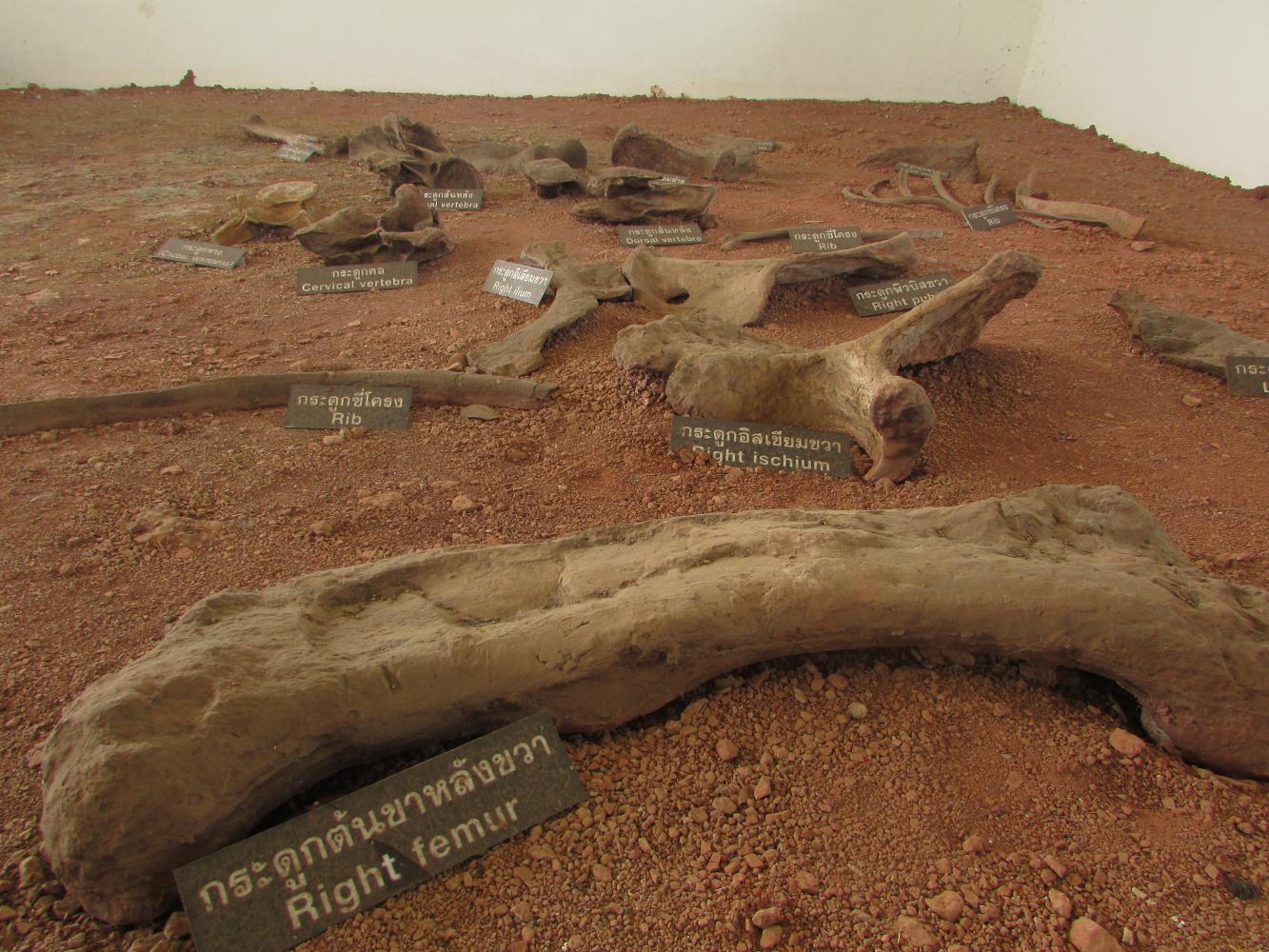
According to Mr Kemchart, Khon Kaen is filled with remains of prehistoric animals, as proven by the recent discoveries of fossils, including a new species related to the crocodile.
"If [Phu Wiang National Park] is recognised as an Unesco Global Geopark, it would further heighten the park's profile on a global scale, opening the door even wider for people from around the world to come and conduct their archaeological research here," Mr Kemchart said.
Unesco Global Geoparks' preference for a bottom-up approach of combining conservation and sustainable development while involving local communities is being recognised by many governments across the globe.
At present, there are 147 Unesco Global Geoparks in 41 countries. A webpage for each site is available, with detailed information about each geopark on each page.
According to Unesco, for a site to be listed as a global geopark, the archaeological discoveries and geological, ecological and cultural qualities of the site must first be recognised as having outstanding historical and geographical significance.
There are currently four Unesco-recognised global geoparks in Southeast Asia -- one in Malaysia, one in Vietnam and two in Indonesia.
That said, the road to attaining Unesco's stamp of approval will not be lined with roses, noted a source with the provincial authorities.
"It is critical that the site is well-planned and well-managed in an active and meaningful way -- which means involving local residents in the protection and the upkeep of Phu Wiang National Park," the source said.
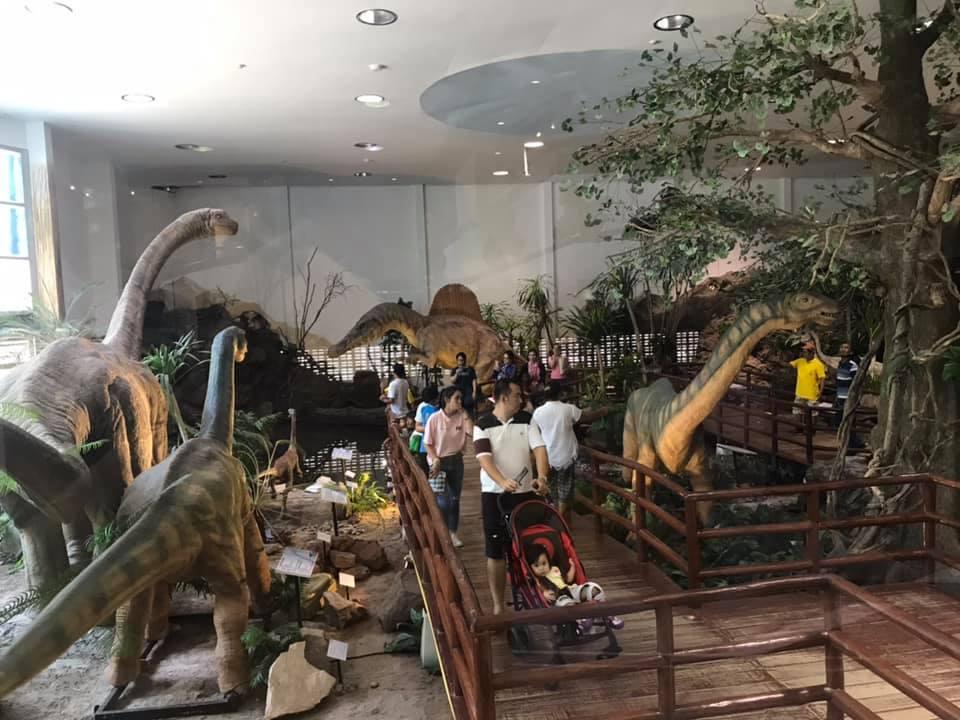
At this stage, the source continued, Khon Kaen Provincial Office has joined forces with the Department of Mineral Resources (DMR) to come up with a management blueprint, which they plan to submit to Unesco along with a global geopark application in 2023.
The areas which the government wants designated as an Unesco Global Geopark span some 1,038 square kilometres (km²), and it encompasses the Phu Wiang National Park and some parts of Wiang Kao and Phu Wiang districts.
"In order to meet [Unesco's] prerequisite, the park will be expanded by a further 2,489km² to include five other districts," the source said.
DMR director-general, Sommai Techawal, said a working group has been dispatched to the area to collect data and and talk to local residents about the plan.
"This information will be compiled by our researchers before it is forwarded to Unesco for deliberation," said Mr Sommai.
He said that before Phu Wiang National Park is promoted a research and tourism site as envisioned, authorities have already asked for the consent of local communities.
"The responded positively to our proposals," he said.
Pakasawan Pratchayakup, a member of a working group tasked with developing the area who is also a city planner with the Khon Kaen Provincial Administrative Organisation (PAO), said the nomination of a global geopark follows a similar process as that of an Unesco World Heritage Site application.
"Handing in the application is one thing. Getting it approved is another thing," she said.
According to Ms Pakasawan, the size of the dinosaur fossils will not lend as much weight in Unesco's consideration as a comprehensive management plan of the geopark with a bona fide participation by local communities who must also feel a sense of ownership of the site.
"For the geopark to thrive and operate in a sustainable manner, a community enterprise should be launched to create tradeable products which are rich with local cultures which are tied to Phu Wiang, whose mascot is the dinosaur," Ms Pakasawan said.
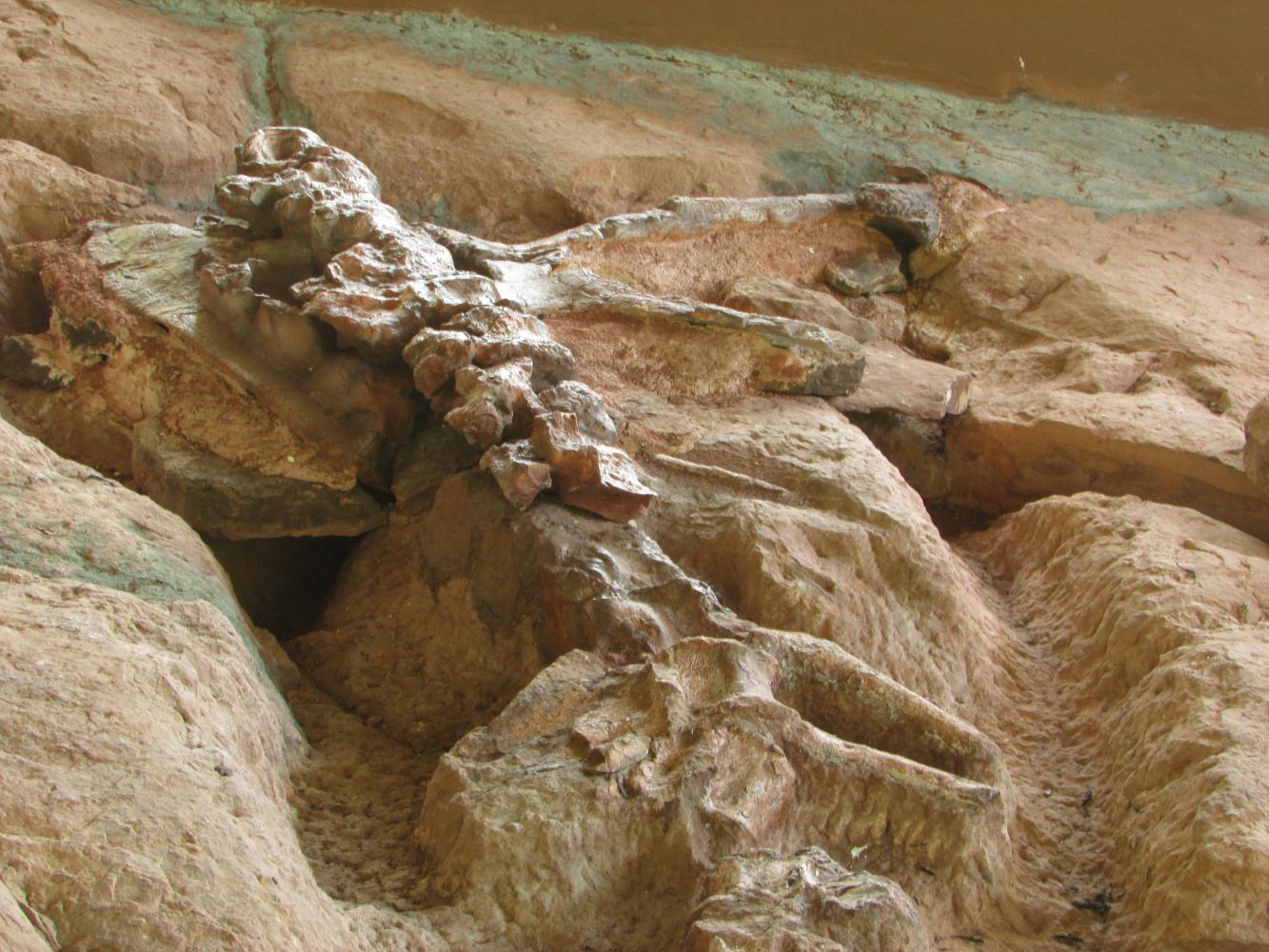
"Unesco wants to see the geopark run by the local communities, and not by the government.
"As such, our plan is to enlist local residents tasked with building a network whose members will assist in the running of the park. Khon Kaen PAO is in the middle coordinating with the locals," Ms Pakasawan explained.
She said that for past three months, the team has been socialising the idea of listing Phu Wiang National Park as a global geopark among local residents.
So far, Ms Pakasawan said, the team has discussed the issue with almost 2,000 residents so far.
"We are trying to tell local residents that if the area is designated as a global geopark, they too will be able to benefit from it," she said.
"So we asked them about the local cuisine and handicrafts, to see if any has the potential to be offered to visitors.
"Why? Because we need to empower local communities and turn them into self-sufficient entrepreneurs, so they could continue preserving the archaeological treasures in their communities," Ms Pakasawan said.
Ms Pakasawan said that in the future, she does not want to see tourists being bussed into the research centre and the dinosaur museum, only to eat a meal they brought from home.
"We should open more eateries which offer local fare to tourists," she said.
Before the global geopark application is sent to Unesco, Phu Wiang National Park must first be upgraded to a National Geopark. The status upgrade will be considered by the Ministry of Natural Resources and Environment next year.
Khon Kaen governor Somsak Jungtrakul said last year that the province welcomed 5.6 million foreign and Thai visitors. Visitor numbers this year are expected to surpass last year's.
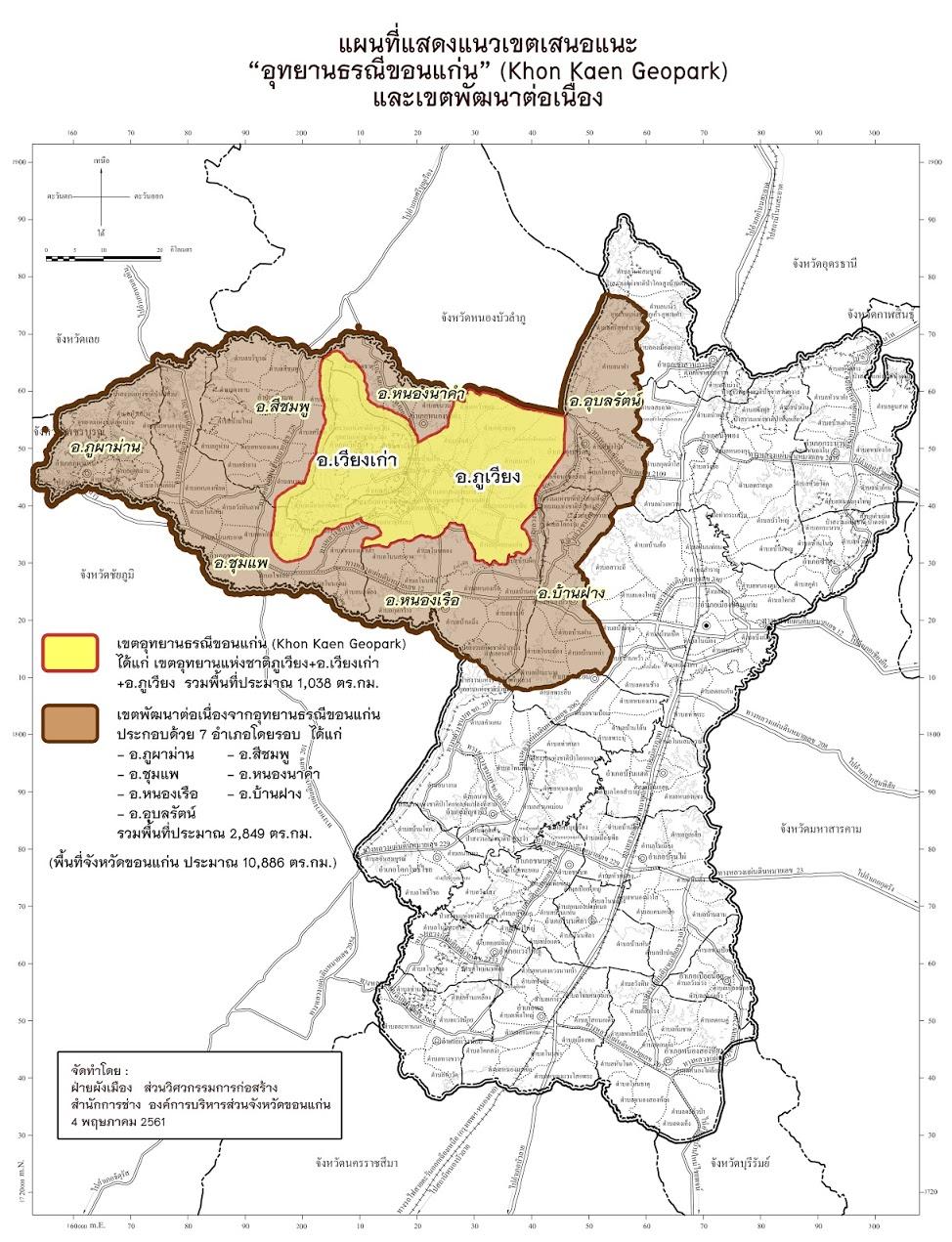
A map shows the coloured area of Wiang Kao and Phu Wiang districts which encompass the zone Khon Kaen has proposed for Unesco Global Geopark designation spanning 1,038 sq km.
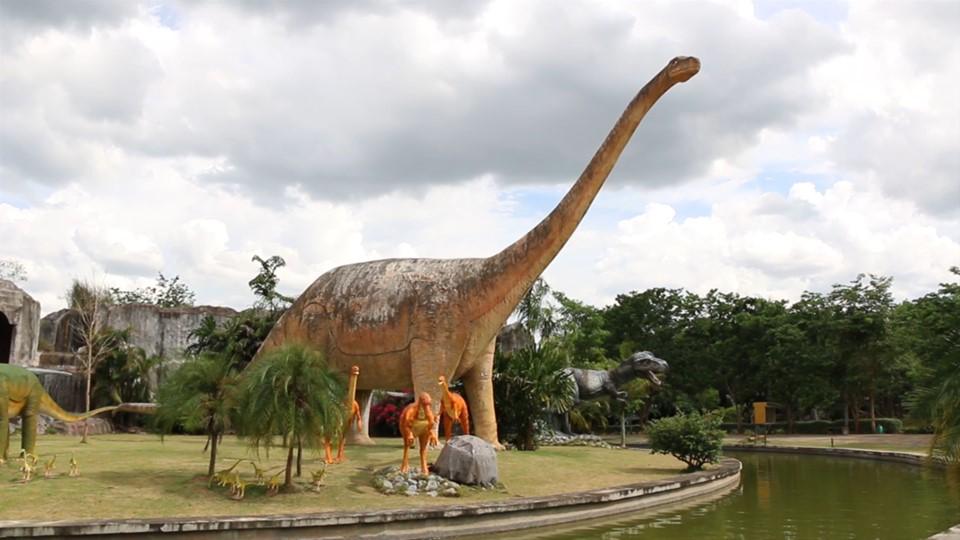
Life-sized statues of classic long-necked herbivorous dinosaurs greet visitors to the museum, which is full of displays of prehistoric animals of all shapes and sizes.
